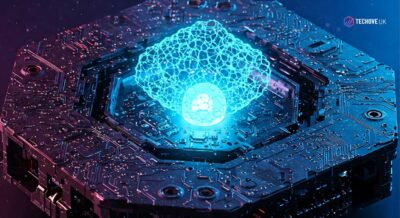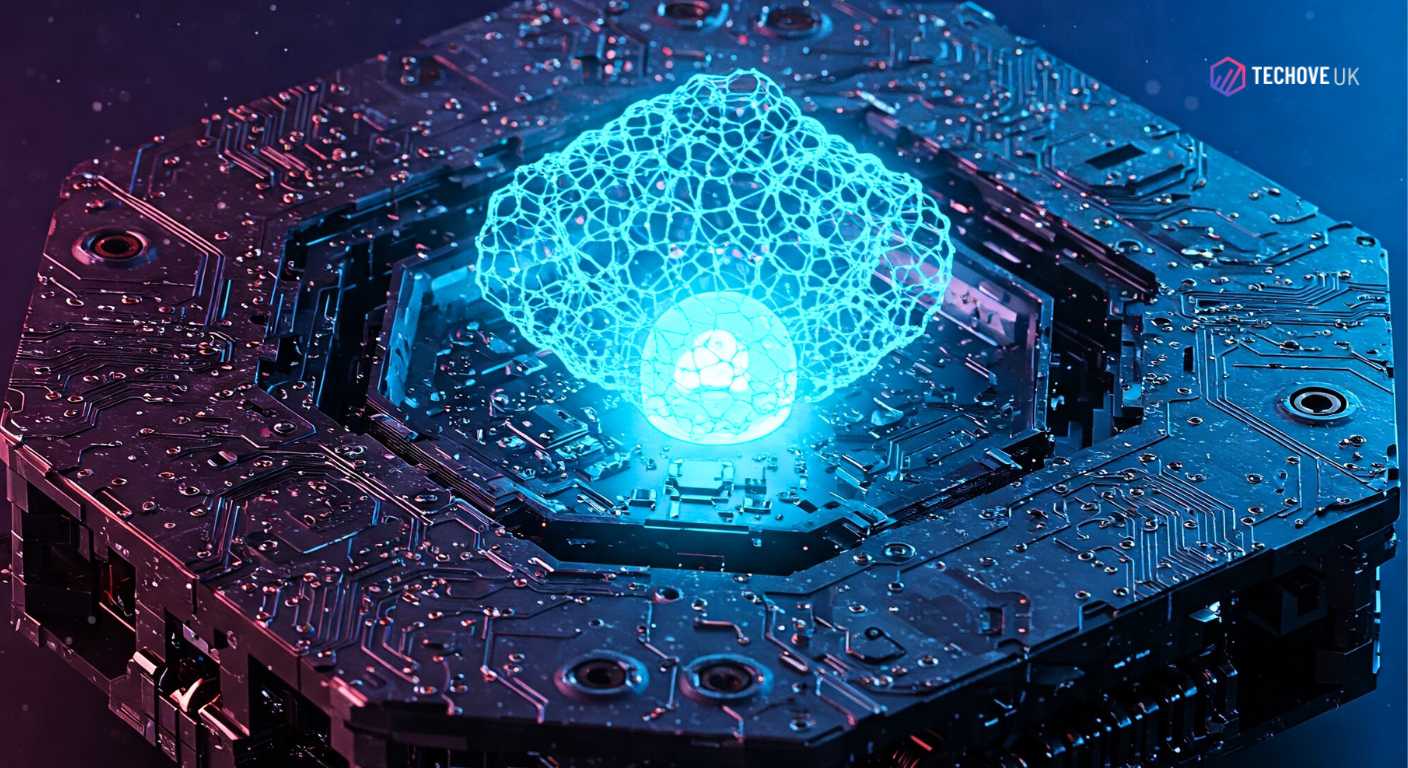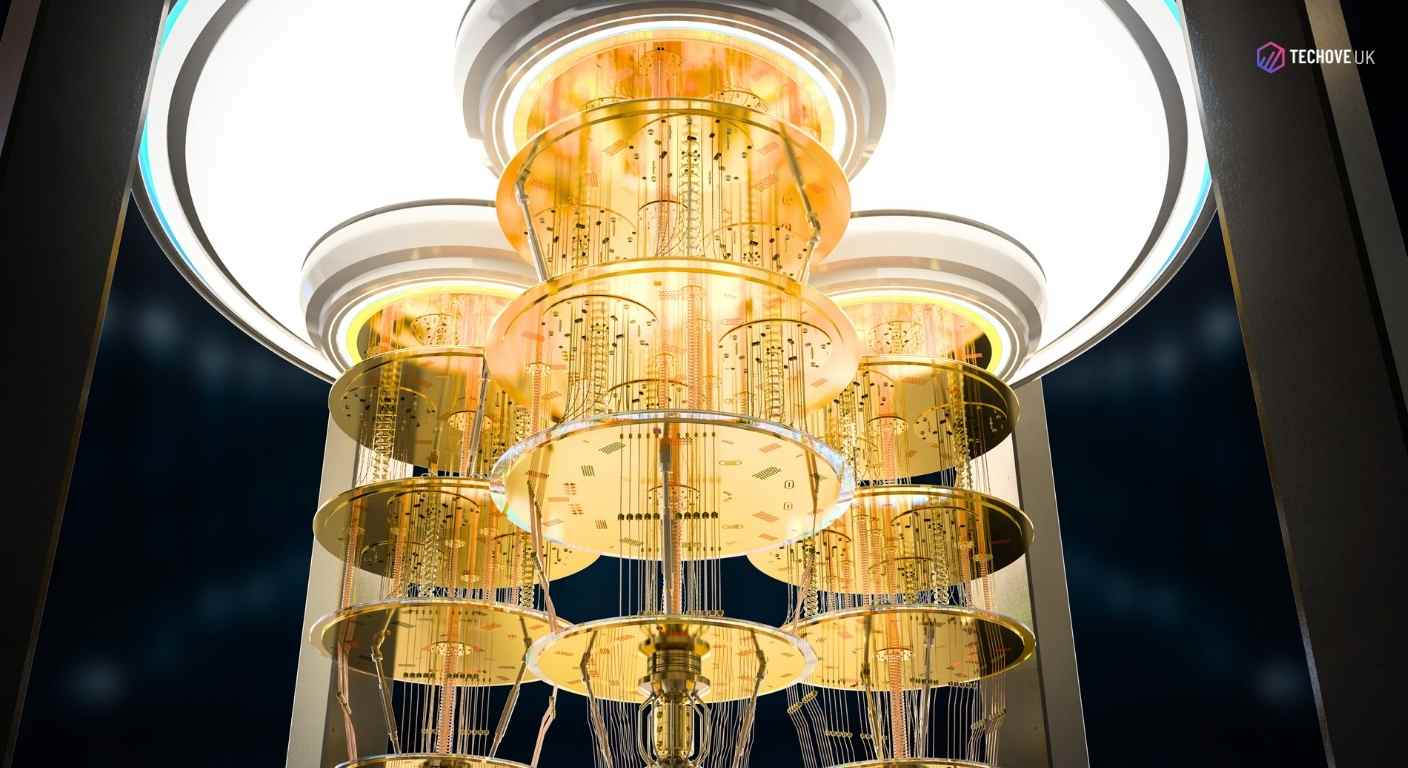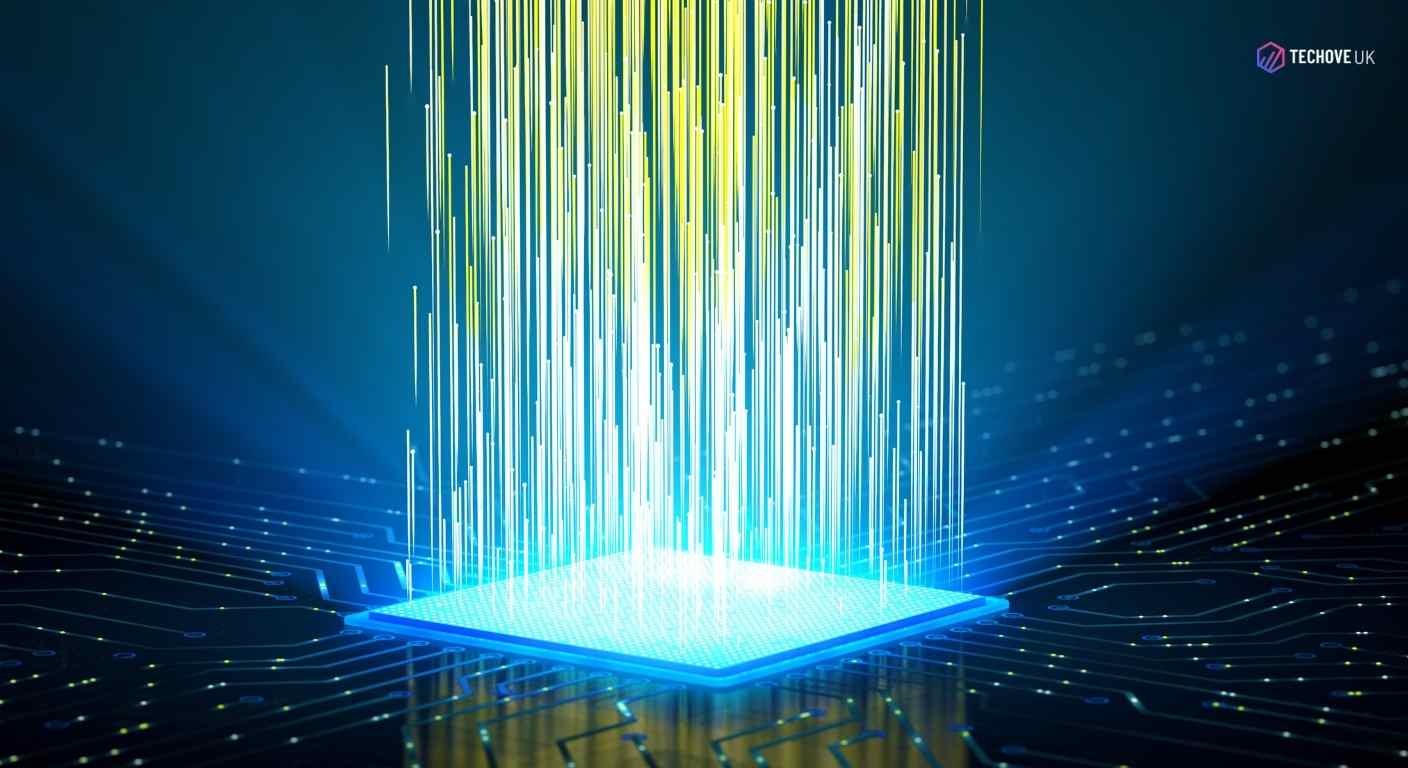Quantum Sensors: Peeking into the Unseen with Precision Beyond Classical Limits
Welcome to Techove UK. We can write our amazing content experiment about Quantum Sensors: The Next Frontier in Sensing Technology with powerful details and information.
Have you ever tried to weigh a single grain of sand using bathroom scales? It sounds impossible, right? Sometimes, our tools are simply not sensitive enough to capture the tiny details we want to measure. This presents a significant challenge for scientists and engineers seeking to understand the world at its most fundamental level or develop new, precise technologies.
But what if there were a way to measure things with unbelievable accuracy? What if we could harness the weird and wonderful rules of the super-tiny quantum world to build sensors far more potent than anything we have today?
That’s precisely what Quantum Sensors are all about. They represent a giant leap in measurement, using the principles of quantum mechanics and quantum physics to achieve precision beyond classical limits. Forget just weighing sand grains; we’re talking about sensing changes so small they were previously hidden from us!
In this post, we will explore the fascinating world of quantum sensors. We’ll keep things simple, avoiding heavy jargon, and discover how this cutting-edge quantum technology is poised to change everything from medicine to navigation. Let’s dive in!
What Are Quantum Sensors?
Consider a typical sensor, such as the thermometer outside your window. It measures temperature based on how much a liquid expands or how electrical resistance changes. These are ‘classical’ sensors rely on the physics we see in our everyday world.
Quantum sensors are different. They use the strange rules that govern atoms and tiny particles. Imagine a little spinning top, so small it follows quantum rules. Its spin might change just by being near a magnetic field, or if the temperature shifts slightly. Quantum sensors utilize these tiny changes in quantum states, such as spin or the energy level of an atom, to measure the world around them.
- Super Sensitivity: Because quantum states are highly delicate, these sensors can detect even the most minor changes.
- New Ways to Measure: They can measure things in ways classical sensors simply can’t.
It’s like having superpowers for measurement! Instead of just seeing the big picture, we can zoom in on the tiniest details.
The Quantum Magic: What Makes Them Tick?
To understand quantum sensors, we must dip our toes into the strange pool of quantum mechanics. Don’t worry, we won’t need complex math! Here are a couple of key ideas:
- Quantum States: Tiny particles like electrons can exist in specific states – think of them like steps on a ladder; they can be on one step or another, but not usually in between. These states can be related to energy, spin (like our tiny top), or other properties. Quantum sensors often work by precisely measuring these states.
- Superposition: This is a famous quantum trick. A quantum particle can be in multiple states at the same time! It’s like a coin spinning in the air before it lands – it’s neither heads nor tails, but a bit of both. Sensors can use this fuzziness to become even more sensitive.
- Quantum Entanglement: Einstein called this phenomenon “spooky action at a distance.” Imagine two coins that are linked, even when far apart. If one lands heads, you instantly know the other landed tails. Entangled particles are connected similarly. This could enable networks of quantum sensors that work together with remarkable coordination.
These quantum effects, which seem bizarre in our big world, are the secret sauce that gives quantum sensors their power.
Diamonds: More Than Just Sparkle – The NV Center
When you think of a Diamond, you probably think of jewelry. But tiny imperfections inside diamonds are becoming superstars in the world of quantum sensors!
Sometimes, within the regular grid of carbon atoms in a diamond, a nitrogen atom takes the place of a carbon atom, and right next to it, there’s a missing carbon atom (a vacancy). This combination is known as a Nitrogen-Vacancy (or NV) center.
Why is this tiny flaw so special?
- Quantum Spin: The NV center has electrons whose quantum spin is incredibly sensitive to their surroundings.
- Room Temperature Operation: Unlike many quantum systems that require super-cold temperatures, NV centers can function as sensors at room temperature. This is a huge advantage.
- Sensing Capabilities: By shining a laser on the NV center and watching how its light changes, scientists can measure:
- Magnetic fields: With incredible precision.
- Temperature changes.
- Electric fields.
- Pressure.
Think of the NV center as a tiny, atomic-sized probe embedded within a solid diamond. This makes diamond-based quantum sensors robust and versatile. They are becoming key players in developing new types of magnetic sensors.
✅Related Post: Quantum Cloud: Cost, Scalability, and Accessibility Explained
Sensing the Invisible: Magnetic Fields Like Never Before
We use magnetic sensors all the time – in compasses, our phones, cars, and medical devices like MRI machines. But what if we needed to measure a weak magnetic field, perhaps the tiny magnetic signals produced by the human brain, or subtle changes in the Earth’s magnetic field deep underground?
Classical magnetic sensors have limits. However, quantum sensors, especially those utilizing NV centers or clouds of super-cooled atoms, are surpassing those limits.
- Unmatched Sensitivity: They can detect magnetic fields thousands, even millions, of times weaker than classical sensors.
- Miniaturization: Researchers are making these sensors tiny, potentially fitting them onto chips.
Imagine the possibilities:
- Geology: Finding mineral deposits or underground structures by mapping tiny variations in the Earth’s magnetic field.
- Defense: Detecting submarines or hidden objects.
- Materials Science: Checking the quality of materials by sensing tiny magnetic imperfections.
- Biomedical Applications: More on this next!
Keeping Perfect Time: Atomic Clocks Get a Quantum Upgrade
You might not think of a clock as a sensor, but the most accurate clocks are, in fact, sensors – they sense the passage of time by measuring the incredibly regular “ticks” of atoms. Atomic clocks are the reason GPS works, financial markets stay synchronised, and scientific experiments can be timed precisely.
Quantum mechanics is taking atomic clocks to the next level. By using lasers to cool atoms to near absolute zero and leveraging quantum effects, scientists are developing astonishingly accurate clocks.
- Current Atomic Clocks: Might lose or gain a second over millions, even billions, of years.
- Next-Gen Quantum Clocks: Aim for accuracy where they wouldn’t lose a second over the entire age of the universe!
Why do we need such crazy accuracy?
- Better GPS & Navigation: More precise timing means more accurate location tracking.
- Fundamental Physics: Testing Einstein’s theories of relativity requires incredibly stable clocks.
- Telecommunications: Faster and more reliable data networks.
These clocks are a prime example of how harnessing quantum phenomena leads to powerful quantum technology.
Quantum Technology in Action: Transforming Industries
The potential of quantum sensors isn’t just theoretical. Applications are emerging across many fields:
1. Biomedical Applications & Medical Imaging
This is one of the most exciting areas. Quantum sensors promise to revolutionize healthcare:
- Magnetoencephalography (MEG): Measuring the tiny magnetic fields brain activity produces. Current MEG machines are bulky and require extreme cooling. Quantum sensors, such as Optically Pumped Magnetometers (OPMs), could lead to wearable MEG systems, making brain scanning more accessible, even for children or patients who need to move. Imagine diagnosing epilepsy or tracking recovery from stroke with a helmet-like device!
- Magnetocardiography (MCG): Similarly, detecting the heart’s magnetic signals for better diagnosis of heart conditions, potentially earlier and non-invasively.
- Early Cancer Detection: Some research suggests that quantum sensors, possibly utilizing NV centers in nanodiamonds, could one day detect tiny tumors’ subtle magnetic or temperature signals long before current methods can.
- Drug Discovery: Precisely measuring the interactions of molecules can accelerate the development of new medicines.
“Quantum sensors could give us a window into the body’s processes at a level we’ve never seen before,” says Dr. Emily Quantum (a hypothetical expert). “It’s about detecting problems earlier and understanding health with greater detail.”
2. Environmental Monitoring
Protecting our planet requires accurate data. Quantum sensors could provide:
- Pollution Detection: Sensing tiny trace amounts of pollutants or greenhouse gases in the air or water with much higher sensitivity than current devices.
- Resource Management: Monitoring water quality or soil conditions more effectively.
- Climate Change Research: Measuring subtle changes in gravity or magnetic fields that relate to ice melt or ocean currents.
Could a network of ultra-sensitive quantum sensors give us an early warning system for environmental changes? It is a question that scientists are actively exploring.
3. Navigation When GPS Fails
We rely heavily on GPS, but the signals can be blocked (underground, underwater, indoors) or jammed. Quantum sensors offer a path to PNT (Positioning, Navigation, and Timing) that does not rely on satellites.
- Inertial Navigation: Classical inertial navigation utilizes gyroscopes and accelerometers to track movement; however, these sensors drift over time, resulting in a loss of accuracy. Quantum gyroscopes and accelerometers, based on atom interferometry, promise vastly reduced drift.
- Gravity Sensing: Measuring tiny local variations in gravity could help map position.
- Magnetic Field Navigation: Using the Earth’s magnetic field like a map, with quantum sensors providing the necessary precision.
Imagine submarines navigating accurately for months without surfacing, or autonomous drones finding their way reliably in complex city environments.
The Bigger Picture: Quantum Computing and Entanglement
Quantum sensors don’t exist in a vacuum. They are part of the broader revolution in quantum technology.
- Quantum Computing: Although different, quantum computing and quantum sensing often employ similar underlying physics and technologies, such as controlling individual atoms or photons. Advances in building stable quantum bits (qubits) for computers can help create better sensors, and vice versa. Understanding how to protect quantum states from noise is crucial for both.
- Quantum Entanglement: This “spooky link” can be used to create networks of quantum sensors. Imagine sensors in different locations linked by entanglement. A measurement on one object can instantly influence the others, allowing for highly correlated measurements over large distances, potentially for astronomy (as seen with the Event Horizon Telescope, which imaged a black hole) or for geological surveys.
Challenges on the Quantum Frontier
While the potential is enormous, building and utilizing quantum sensors is a challenging task.
- Fragility: Quantum states are delicate and easily disturbed by noise (vibrations, stray magnetic fields, temperature changes). Protecting them is a significant engineering challenge.
- Cost & Complexity: Current quantum sensing setups can be expensive, bulky, and require expert operators.
- Miniaturization: Making these sensors small, robust, and affordable enough for widespread use, such as in smartphones, is a key goal.
- Manufacturing: Developing ways to manufacture these complex devices at scale reliably.
However, researchers worldwide are tackling these challenges with incredible ingenuity. Just as early classical computers filled entire rooms, we can expect quantum sensors to become smaller, cheaper, and more potent over time.
Conclusion: Details About Quantum Sensors
We stand at the threshold of a new era in measurement. Quantum Sensors, powered by the fascinating laws of quantum physics, are pushing the boundaries of precision far beyond what we thought possible. From seeing the intricate workings of the human brain with NV centers in diamonds to navigating without GPS using atomic clocks, the applications are transformative.
These are no longer just laboratory curiosities. They are rapidly developing quantum technologies moving towards real-world impact in biomedical applications, environmental monitoring, navigation, and fundamental science.
The journey involves overcoming challenges, but the promise is immense: a world where we can sense the previously hidden signals that shape our health, our planet, and our understanding of the universe.
The key takeaway? By harnessing the quantum world, Quantum Sensors offer precision beyond classical limits.
What undiscovered secrets do you think quantum sensors will reveal next? Share your thoughts in the comments below!





